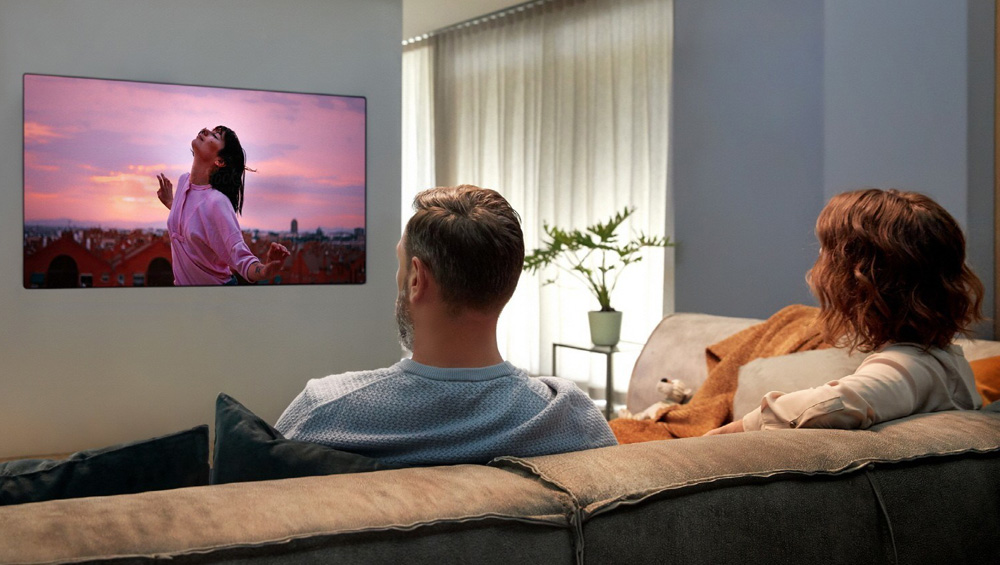
TVN Tech | NextGen TV Racing For Scale

When the NAB Show scheduled for April was canceled back in March due to the COVID-19 pandemic, broadcasters eager to launch new services using the ATSC 3.0 “NextGen TV” standard said they would forge ahead regardless of missing the opportunity to showcase their plans in Las Vegas.
Four months later, they appear to have stayed on track despite the logistical and financial challenges brought about by the pandemic. Stations in Las Vegas, Pittsburgh, Nashville and Salt Lake City have all begun broadcasting in the new standard, with Portland, Ore., scheduled to launch 3.0 next week. Other large markets including Tampa and Seattle are poised to follow shortly.
Broadcasters are also exploring the full capabilities of the NextGen standard with several new initiatives this summer, including the launch of a NextGen-capable smartphone and a trial of advanced alerting capabilities in Washington, D.C.
Around 10 markets should be on-air with 3.0 broadcasts by the end of the third quarter and perhaps 20 by year’s end, according to representatives of Pearl TV, a consortium of several large station groups, and BitPath (formerly Spectrum Co.), a joint venture formed by Sinclair and Nexstar to explore data delivery businesses using the 3.0 spectrum. That would fall far short of the 40 top markets, and over 60 markets overall, that broadcasters initially pledged at NAB 2019 to launch with 3.0 by the end of this year.
Progress Despite Pandemic
But 3.0 insiders say the launches to date still represent significant progress considering the engineering challenges stations have faced in 2020, between wrapping up the FCC-mandated RF repack process and scrambling to create remote production workflows to deal with COVID-19 lockdowns. Due to the pandemic, 3.0 launches have been done with as little hands-on involvement as possible, since many of the software-based systems can be upgraded and controlled remotely.

BitPath’s John Hane
“It’s really spectacular given the environment we’re in,” says BitPath President John Hane, who predicts BitPath will launch in 18 markets this year. “Our approach is to keep going unless something physically stops us.”
Pearl TV Executive Director Anne Schelle says the initial launch schedule for the top 40 markets had already slipped by about a quarter before COVID-19 hit. She says about half of them will be done this year, with the rest to come on in the “early part” of 2021.
“We have a fair number of markets that we’re focusing on in the top 40 that were on the original list,” Schelle says. “For fall, that does include markets like Tampa, Orlando and Detroit. We’re also hoping for L.A., that’s in the works, and that could be first quarter next year.”
Schelle adds that Pearl has hired an advertising firm and is working with consumer electronics manufacturers on an “umbrella brand campaign” for NextGen TV which will include TV spots, sizzle reels for retail use and social media content.
“Given the COVID situation, we’re targeting markets for the late fall that have full services up and are markets that TVs are predominantly being sold in,” Schelle says.
Tapping UHD Benefits
One of the main benefits of 3.0 to broadcasters is its ability to deliver UHD formats like 1080p HDR and 4K. Fox, NBC and CBS have already produced HDR and 4K sports coverage in the past for pay TV and streaming partners. But none of the major networks are currently offering affiliates 3.0 programming feeds in those formats, though special-event UHD programming is being discussed.

Pearl TV’s Anne Schelle
So most early 3.0 stations are simply showing simulcasts of their ATSC 1.0 programming in 1080i or 720p HD, along with enhanced audio and interactive applications that can pull additional content via broadband. They plan to launch 1080p HDR at some point in the next year depending on networks’ available programming.
Sinclair, however, is offering high-dynamic range from all of its early 3.0 stations, and is even upconverting NBC’s 1080i programming to 1080p HDR at KSNV Las Vegas. Mark Aitken, Sinclair SVP of advanced technology, says that it’s important to broadcast 3.0 with HDR from the start in order to give a tangible benefit to early adopters of NextGen TV sets.
“There is no distribution from the networks of HDR content, and yet everybody is promulgating that one of the virtues of the new standard is HDR,” Aitken says. “We think if a consumer goes out and spends $3,500 on an 8K set [all of Samsung’s sets that support 3.0 are 8K sets], we want them to actually see something different when they come to our channel.”
The difficulty for the networks today is that to deliver HDR or 4K would require a separate distribution chain from the one currently used to deliver ATSC 1.0, an investment that at this point would only feed a handful of markets. Fox began regularly producing Thursday night NFL games last season in 1080p HDR and also produced Super Bowl LIV in the format, but the “good stuff” doesn’t make if very far past the truck as the rest of Fox’s distribution chain is geared to 720p SDR for ATSC 1.0 distribution, according to Winston Caldwell, Fox VP of spectrum engineering and advanced engineering.
Fox has no definitive plans for 3.0 programming. However, the network is considering how it could provide HDR feeds of event programming like Thursday Night Football to select 3.0 markets on a one-off basis.
“There may be an event soon where we will take a particular market, and subscribe to a fiber link to the station to take it directly,” says Caldwell, who says the same approach could also be used for entertainment programming.
Caldwell notes that Fox is building a new network distribution center in Tempe, Ariz., that will be able to support a wide array of UHD formats. But until that is complete, UHD programming will probably consist of such “stunts” to a handful of stations.
“This is a transitional period,” he says. “Eventually we’ll get down to one distribution path.”

Sinclair’s Mark Aitken
HDR achieves better contrast in late-model TVs by sending additional information that the sets use to display brighter highlights and a wider range of colors (technically called Wide Color Gamut). There are various flavors of HDR supported by different professional and consumer devices, including HDR10, Hybrid Log Gamma (HLG), Samsung’s HDR10+ and Dolby’s proprietary Dolby Vision.
Sinclair is creating HDR pictures for its 3.0 feeds by using Technicolor’s SL-HDR1 technology, which is included in the 3.0 standard. Aitken says that Sinclair favors SL-HDR1 because it can produce a quality picture on an HDR set while also being fully backwards-compatible with SDR displays, which simply ignore the HDR metadata. More important, if the HDR metadata gets lost within the transmission chain SL-HDR1 will still produce a good-looking SDR picture on an HDR set, Aitken says, which isn’t the case with some other HDR standards.
Sinclair inputs the standard-dynamic range (SDR) feeds from the networks into a Technicolor device that creates HDR metadata using Technicolor’s “Intelligent Tone Mapping” technology. In the case of NBC, it plugs in NBC’s recommended HDR value (technically called a LUT, or “look up table”) into the Technicolor device to create a final picture that matches NBC’s HDR intentions. It is also runs NBC’s 1080i video through a format converter to derive 1080p.
A NextGen-Capable Smartphone
Sinclair is broadcasting 720p HDR at 4 megabits per second (4 Mbps), while its 1080p HDR in Las Vegas is 4.5 Mbps. It is keeping the data rates low because it is transmitting its 3.0 programming in a “robust” mode that makes the signals easily receivable on mobile and portable devices as well as big-screen TVs. Sinclair has long been a proponent of mobile TV, and through its subsidiary ONE Media it has been working with Indian technology firm Saankhya Labs to develop a wireless chip capable of receiving both 3.0 and cellular signals.
That work is now complete in the form of the first reference design 3.0 smartphone receiver chipset, based on the Qualcomm Snapdragon 665 chip, as well as a mid-range smartphone that will work on the AT&T and T-Mobile networks. Sinclair plans to market the unlocked smartphone to Mobile Virtual Network Operators (MVNOs) that provide wireless service using those cellular platforms.
“We know there’s a lot of interest among the MVNO’s,” Aitken says. “They think broadcast television on a cellphone is a distinguishing product they can sell.”
The 3.0 smartphone, built by Indian manufacturer Borqs, has an embedded 3.0 broadcast antenna and receiver along with all the features of a mid-range phone that would typically retail for $300 to $400 (though Sinclair will initially sell the phones for far less, just covering costs of around $150). ONE Media has ordered two runs of the 3.0-enabled smartphones, with an initial 50 evaluation units coming next month and an additional 1,000 production models following a month later, which, Aitken says, Sinclair will give to “friends and family.”

Fox’s Winston Caldwell
Beyond stations offering mobile TV, emergency alerting, targeted advertising and interactive applications, the other big opportunity Sinclair sees for 3.0 is Data Delivery as a Service (DDaaS). Broadly, DDaaS means using the 3.0 spectrum for non-TV applications to derive revenue from third parties. That could encompass everything from “5G offloading” — broadcasting video streams of popular content for wireless carriers in order to reduce unicast traffic on their networks — to supplying Internet of Things (IoT) data, to industrial applications like delivering software updates to factory equipment.
Finding DDaaS applications and customers for the 3.0 spectrum is the core mission of BitPath, which plans to share data revenues equally between equity partners Sinclair and Nexstar and third-party stations that contribute capacity to the venture. Since early 3.0 launches involve multiple stations sharing one 6 Mhz channel, in the near term BitPath is eyeing data opportunities that use relatively little bandwidth — 1 Mbps or less on a continuous basis, or “bursty” applications with slightly higher bit-rates that only run intermittently.
“We don’t need to allocate a lot of capacity to this to start making money on it,” Hane says. “We can add services that are entirely additive without displacing anything we’re doing [in the core TV business].”
What BitPath does need, however, is scale, since most data customers are looking for national reach. Hane concedes that broadcasters won’t hit that critical mass this year.
“We have to build a market to build a service,” he says. “If you have 10% or 20% or 30% population coverage, there’s going to be limited interest. You have got to get close to 90%, 95%, and then you will have clients willing to rely on the platform.”
































Comments (0)